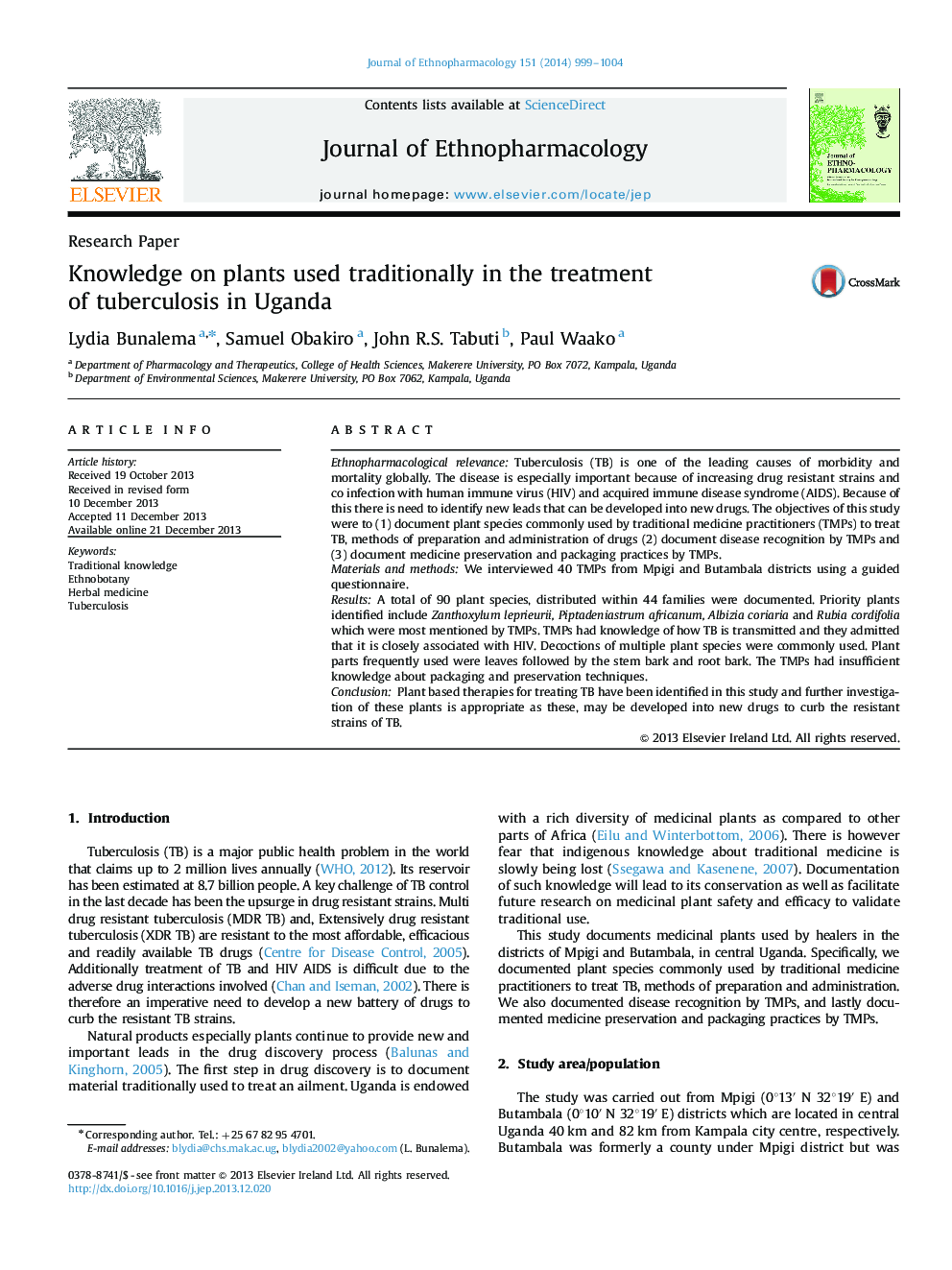| Article ID | Journal | Published Year | Pages | File Type |
|---|---|---|---|---|
| 2545308 | Journal of Ethnopharmacology | 2014 | 6 Pages |
Ethnopharmacological relevanceTuberculosis (TB) is one of the leading causes of morbidity and mortality globally. The disease is especially important because of increasing drug resistant strains and co infection with human immune virus (HIV) and acquired immune disease syndrome (AIDS). Because of this there is need to identify new leads that can be developed into new drugs. The objectives of this study were to (1) document plant species commonly used by traditional medicine practitioners (TMPs) to treat TB, methods of preparation and administration of drugs (2) document disease recognition by TMPs and (3) document medicine preservation and packaging practices by TMPs.Materials and methodsWe interviewed 40 TMPs from Mpigi and Butambala districts using a guided questionnaire.ResultsA total of 90 plant species, distributed within 44 families were documented. Priority plants identified include Zanthoxylum leprieurii, Piptadeniastrum africanum, Albizia coriaria and Rubia cordifolia which were most mentioned by TMPs. TMPs had knowledge of how TB is transmitted and they admitted that it is closely associated with HIV. Decoctions of multiple plant species were commonly used. Plant parts frequently used were leaves followed by the stem bark and root bark. The TMPs had insufficient knowledge about packaging and preservation techniques.ConclusionPlant based therapies for treating TB have been identified in this study and further investigation of these plants is appropriate as these, may be developed into new drugs to curb the resistant strains of TB.
Graphical abstractFigure optionsDownload full-size imageDownload high-quality image (96 K)Download as PowerPoint slide
